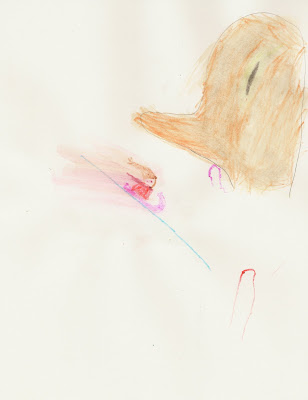Today, we played with play dough. You might think this isn't really a learning activity, but it is. I had the kids shape their names with the dough before being able to do anything else with it. We made a dough with glitter in it, just for fun. Green, for spring. Here are our two favorite play-dough recipes. One is edible, the other is not. I got the edible recipe from my good friend, Nadine, who does some wonderful things with her children, and is a crafty queen in her own right (though she might not admit it).
Cookie Play-dough (the edible one)
The dough turns out the consistency of playdough. There are no eggs, so the dough is edible. The forms hold (if they aren't too tall), and one of the other perks? the color doesn't change when you bake it!1 cup margarine or butter
½ cup sugar
1 tablespoon mil
1 teaspoon vanilla
2 ¼ cups all-purpose flour
Food coloring
In a large mixing bowl beat margarine or butter with an electric mixer on medium to high speed about 30 seconds or till softened. Add sugar and beat till fluffy. Beat in milk and vanilla. Add flour and beat till well combined.
Separate dough into various containers- stir in food coloring until color is desired. Roll, shape, or mash dough into desired shapes/forms. Bake at 325°F for 12-15 minutes- just until bottom of cookie edge on the cookie sheet is lightly brown (color of dough will not change significantly). Cool on wire rack.
Additional decorating as desired.
Earth Friendly Play Dough
- 1 cup flour (not self-rising)
- 1/2 cup salt
- 1 cup water
- 1 tablespoon vegetable oil
- 1-1/2 teaspoons cream of tartar
Mix in saucepan over low heat. (It does not have to heat long.) Dough is ready when it rolls into a ball. Keep dough fresh in an airtight container. If you need to make different colors, add food coloring while mixing over heat.
We have added glitter, or extracts to this one to make it more interesting (some fun combos are mint extract (a TINY bit added to the vegetable oil) and white or blue glitter--for winter "coldness", cinnamon for fall--you get the point).























